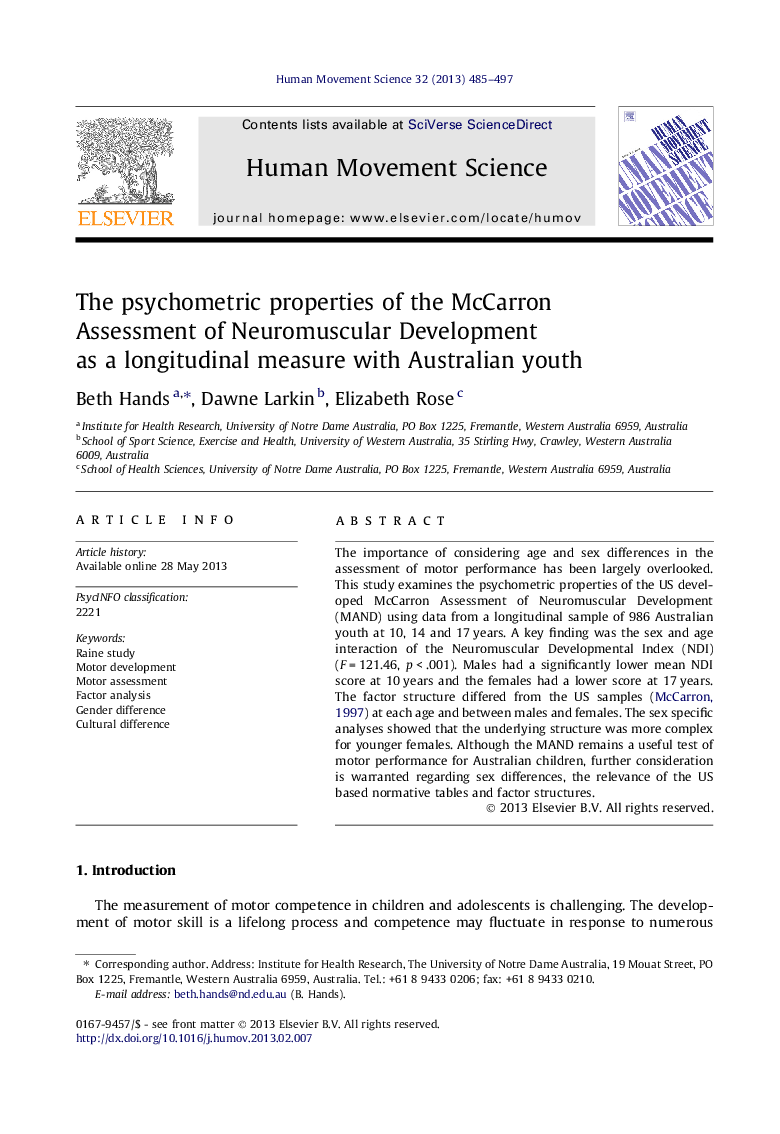| کد مقاله | کد نشریه | سال انتشار | مقاله انگلیسی | نسخه تمام متن |
|---|---|---|---|---|
| 928401 | 922363 | 2013 | 13 صفحه PDF | دانلود رایگان |

• Gender differences in motor performances should be accommodated in assessment.
• The underlying factor structure was influenced by sex and age.
• The MAND is a useful test of motor performance but requires adjusting for Australian populations.
The importance of considering age and sex differences in the assessment of motor performance has been largely overlooked. This study examines the psychometric properties of the US developed McCarron Assessment of Neuromuscular Development (MAND) using data from a longitudinal sample of 986 Australian youth at 10, 14 and 17 years. A key finding was the sex and age interaction of the Neuromuscular Developmental Index (NDI) (F = 121.46, p < .001). Males had a significantly lower mean NDI score at 10 years and the females had a lower score at 17 years. The factor structure differed from the US samples (McCarron, 1997) at each age and between males and females. The sex specific analyses showed that the underlying structure was more complex for younger females. Although the MAND remains a useful test of motor performance for Australian children, further consideration is warranted regarding sex differences, the relevance of the US based normative tables and factor structures.
Journal: Human Movement Science - Volume 32, Issue 3, June 2013, Pages 485–497